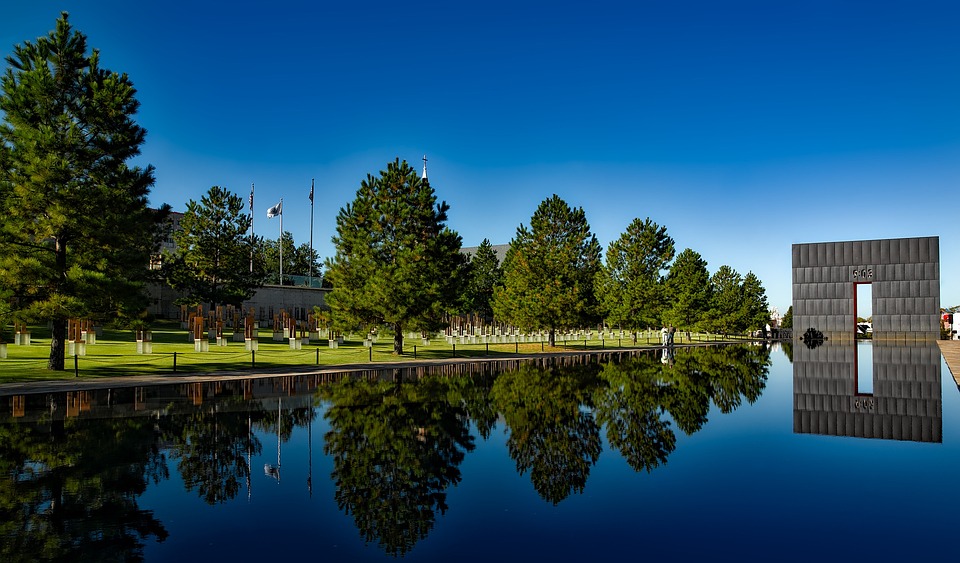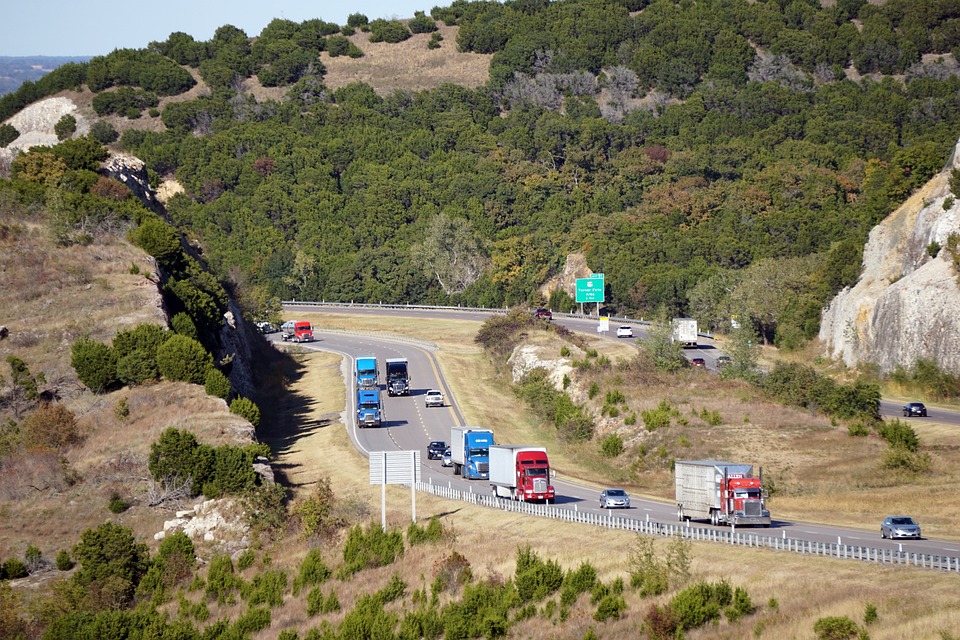Oklahoma state (USA)
Location
Oklahoma is located in the south-central region of the United States, bordering Texas, Kansas, Missouri, Arkansas, New Mexico, and Colorado. Known for its vast plains, fertile lands, and significant natural resources such as oil and natural gas, Oklahoma is a central hub with Oklahoma City as its capital and largest city.
Other major cities include Tulsa, Norman, and Lawton. Its strategic geographic position makes Oklahoma an important transportation hub for interstate highways and railroads.
Climate and Landscape
Oklahoma has a temperate continental climate with distinct seasons.
Winters are relatively mild, with average temperatures ranging from -1°C to 10°C, while summer temperatures can reach 35-40°C. Oklahoma is well-known for frequent tornadoes due to its location in the “Tornado Alley,” where warm and cold air masses collide. The state’s landscape is mostly plains and prairies, with forested areas and low hills in the east transitioning to arid grasslands and canyons in the west.

Population
According to the latest census, Oklahoma’s population is around 4 million. The majority reside in large urban areas like Oklahoma City and Tulsa, though many live in rural areas.
The population includes a variety of ethnic groups, with prominent representation from Whites (about 65%), African Americans (7%), Native Americans (approximately 9%), and Hispanics (12%).
Crime
The crime rate in Oklahoma is generally above the national average, but it varies significantly by region. Larger cities like Oklahoma City and Tulsa experience higher crime rates compared to smaller towns and rural areas. The state has been making active efforts to reduce crime through bolstering law enforcement and community initiatives.
Crime Levels and Safe Areas:
- Oklahoma City: Violent crime here is about 775 per 100,000 residents, including incidents such as robberies and assaults. Higher-risk areas are often concentrated in the city’s central parts.
- Tulsa: The violent crime rate is even higher at around 900 per 100,000 residents, with some neighborhoods, especially in the west, requiring extra caution.
- Small Towns and Rural Areas: Places like Edmond and Norman have considerably lower crime rates, making these areas safer for families.
Economy
Oklahoma’s economy is well-known for its reliance on the energy sector, particularly oil and natural gas. Additionally, the state has a growing presence in agriculture, manufacturing, and services, offering steady economic growth and employment opportunities for residents.
Key Economic Indicators:
- Minimum Wage: $7.25 per hour (below the national average, though an increase is anticipated).
- Median Household Income: Approximately $53,000 annually, placing Oklahoma around 40th among U.S. states in terms of income.
- Poverty Rate: 15%, which is above the national average, reflecting significant disparities in wealth between urban and rural areas.
- Employment Rate: 4.7%, slightly higher than the national average.
Oklahoma for Business
Oklahoma is an attractive state for business due to its low taxes, resource availability, and relatively inexpensive labor. The state offers significant tax incentives for energy-sector businesses, promoting the growth of the oil and gas industry, and provides incentives to small and medium-sized businesses.
Business Advantages:
- Low Corporate Income Tax: The rate is 6%, one of the lowest in the nation.
- Tax Benefits for Energy Companies: Special incentives for companies involved in resource development and extraction.
- Low Business Operating Costs: Affordable office and commercial rental rates, moderate wages.
- High Demand for Skilled Workers in Manufacturing and Services.
Business Disadvantages:
- High competition within the energy sector.
- Relatively limited market for retail businesses, especially in rural areas.
- Possible challenges in hiring skilled workers due to young professionals moving to larger cities.

Real Estate
The real estate market in Oklahoma offers significantly more affordable prices than in many other U.S. states, making it attractive to budget-conscious buyers. Compared to large metropolises like New York or Los Angeles, it is possible to find homes and apartments at much lower prices here, as well as reasonable rental rates.
Average Housing Prices:
- Oklahoma City: The average price to buy a home is approximately $150,000 – $180,000. Renting a one-bedroom apartment ranges from $700 to $900 per month.
- Tulsa: With slightly lower housing costs, the average price of a home is around $140,000, and one-bedroom apartment rentals range from $600–$800.
- Smaller Towns: In cities like Norman and Edmond, prices are even more affordable. Home prices start at around $120,000, and one-bedroom rentals can be between $500–$700.
Ecology
Oklahoma’s environmental situation is largely impacted by its developed oil and gas industry, which poses risks of spills and other pollution. However, the state is implementing initiatives to reduce environmental impact and conserve natural resources. Renewable energy, particularly wind power, is also growing, gradually reducing dependence on fossil fuels.
Landmarks
Oklahoma offers a variety of interesting places that attract tourists and locals alike. From historical sites and natural parks to unique museums and festivals, there is something for everyone. The state is known for its cultural diversity and rich history, especially with a significant presence of Native American communities.
Main Tourist Attractions:
- Oklahoma City National Memorial & Museum: This memorial honors the victims of the 1995 Oklahoma City bombing. It’s both a place of remembrance and an educational museum providing information on the tragedy and its impact on the nation.
- National Cowboy & Western Heritage Museum: Located in Oklahoma City, this museum showcases a large collection of Western American artifacts, including art, sculptures, and cowboy culture exhibits.
- Art Deco District in Tulsa: Tulsa is home to many Art Deco buildings, some of the finest examples of this architectural style in the U.S.
- Turner Falls State Park: Known for its 77-foot waterfall, this park is a popular spot for nature outings, hiking, and camping.
- Cherokee Festival: Oklahoma is home to many Native American tribes, and cultural events like the Cherokee Festival showcase Native American history, culture, and art.
Why People Move to Oklahoma
Oklahoma is becoming an attractive relocation destination due to affordable housing, a moderate cost of living, and favorable business conditions. The state offers a more relaxed lifestyle and more affordable housing than major urban centers, which is especially appealing to families and retirees.
Key Reasons for Moving:
- Low Cost of Living: Oklahoma has one of the lowest costs of living in the U.S., allowing residents to save on housing, transportation, and groceries.
- Affordable Housing Market: Housing costs are considerably lower than in many other states, and property tax rates are among the lowest in the country.
- Business-Friendly Environment: Entrepreneurs are drawn to the state’s low taxes, easy business registration process, and incentives for energy sector companies.
- Natural Beauty and Attractions: Scenic parks, waterfalls, and cultural landmarks make living in the state more enjoyable and interesting.
Potential Drawbacks of Living in Oklahoma
Despite its many advantages, there are aspects that might be drawbacks for new residents. These should be considered by those planning to move, particularly concerning climate conditions or the economic reliance on the volatile energy sector.
Drawbacks:
- Unstable Economy: With the economy highly dependent on oil and gas, fluctuations in energy prices can impact the state’s financial stability.
- Frequent Natural Disasters: Oklahoma lies within “Tornado Alley,” so residents often face tornadoes and severe storms.
- Limited Leisure Options in Rural Areas: While larger cities offer plenty of entertainment, rural areas have less developed infrastructure for recreation.
Table of Contents